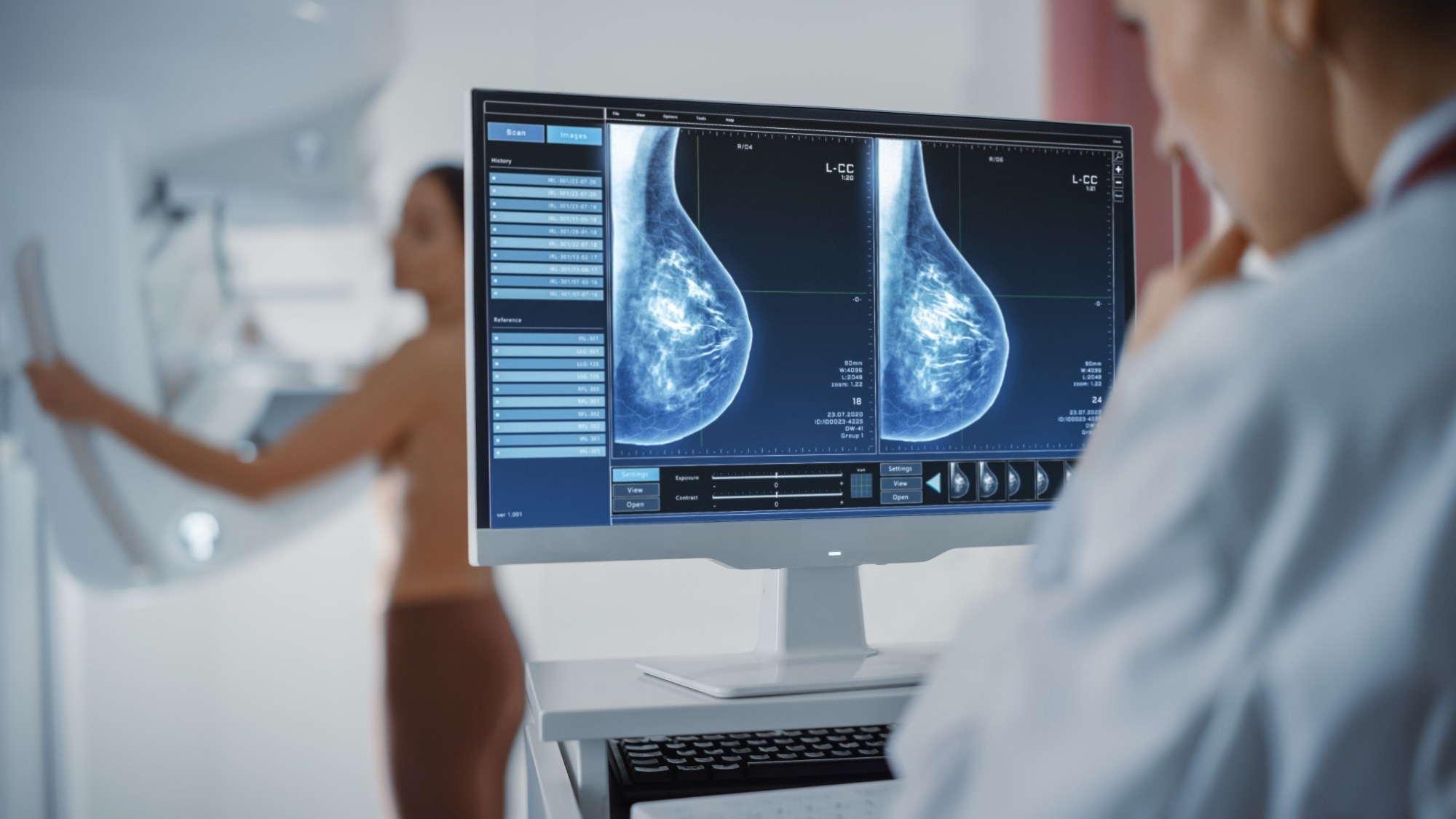
Image Credit: Gorodenkoff/Shutterstock.com
Published in the Journal of the National Cancer Institute, the study found that AI was able to flag “mammographically visible” interval cancers during initial screenings - cases where the tumor was present on the mammogram but either not detected by radiologists or displayed signs too subtle to be recognized by the human eye.
The researchers estimate that integrating AI into screening could reduce the number of interval breast cancers by as much as 30 %.
This finding is important because these interval cancer types could be caught earlier when the cancer is easier to treat. For patients, catching cancer early can make all the difference. It can lead to less aggressive treatment and improve the chances of a better outcome.
Dr. Tiffany Yu, Assistant Professor and Study First Author, Radiology, David Geffen School of Medicine, UCLA
While similar research has been carried out in Europe, this study is among the first to examine AI's ability to detect interval breast cancers in a US setting. The differences between screening protocols are notable: in the US, most mammograms are performed annually using digital breast tomosynthesis (DBT or 3D mammography), while many European programs rely on digital mammography (DM or 2D) with screenings every two to three years.
The UCLA team conducted a retrospective analysis of nearly 185,000 mammograms taken between 2010 and 2019, using both DM and DBT technologies. Among these, 148 cases involved women who were later diagnosed with interval breast cancer.
Radiologists reviewed these cases to understand why the cancers were not detected during initial screenings. The researchers adapted a European classification system to categorize the missed cancers, including categories such as missed reading error, minimal signs (actionable and non-actionable), true interval cancers, occult cancers (truly invisible on mammogram), and technical errors.
The study then applied a commercially available AI tool called Transpara to the original screening mammograms to see whether it could identify suspicious signs that were overlooked. The software assigned each image a cancer risk score from 1 to 10, with scores of 8 or higher flagged as potentially concerning.
Key Findings:
- 76 % of the mammograms linked to interval cancers that had been initially read as normal were flagged by the AI tool.
- 90 % of cancers missed due to reading errors - where the tumor was visible but not acted upon - were correctly flagged.
- 89 % of actionable minimal-sign cancers were flagged, along with 72 % of the non-actionable minimal-sign cases.
- 69 % of occult cancers, which appear invisible on the mammogram, were still flagged by the AI.
- For true interval cancers - those that genuinely developed after the initial screening - the AI flagged about 50 %.
While we had some exciting results, we also uncovered a lot of AI inaccuracy and issues that need to be further explored in real-world settings. For example, despite being invisible on mammography, the AI tool still flagged 69% of the screening mammograms that had occult cancers. However, when we looked at the specific areas on the images that the AI marked as suspicious, the AI did not do as good of a job and only marked the actual cancer 22% of the time.
Dr. Hannah Milch, Assistant Professor and Study Senior Author, Radiology, David Geffen School of Medicine
The researchers emphasized the need for larger, prospective studies to better understand how AI could be used alongside radiologists. Key questions remain, such as how to handle AI-flagged findings that aren't visible to the human eye, and how to weigh the AI's input when it's not always accurate in pinpointing cancer locations.
“While AI isn’t perfect and shouldn't be used on its own, these findings support the idea that AI could help shift interval breast cancers toward mostly true interval cancers. It shows potential to serve as a valuable second set of eyes, especially for the types of cancers that are the hardest to catch early. This is about giving radiologists better tools and giving patients the best chance at catching cancer early, which could lead to more lives saved,” added Yu.
Other contributors from UCLA include Dr. Anne Hoyt, Dr. Melissa Joines, Dr. Cheryce Fischer, Dr. Nazanin Yaghmai, Dr. James Chalfant, Dr. Lucy Chow, Dr. Shabnam Mortazavi, Christopher Sears, Dr. James Sayre, Dr. Joann Elmore, and Dr. William Hsu.
The study was supported in part by the National Institutes of Health, the National Cancer Institute, the Agency for Healthcare Research and Quality, and Early Diagnostics Inc.
Journal Reference:
Yu, T. T., et al. (2025) Mammographic classification of interval breast cancers and artificial intelligence performance. Journal of the National Cancer Institute. doi.org/10.1093/jnci/djaf103